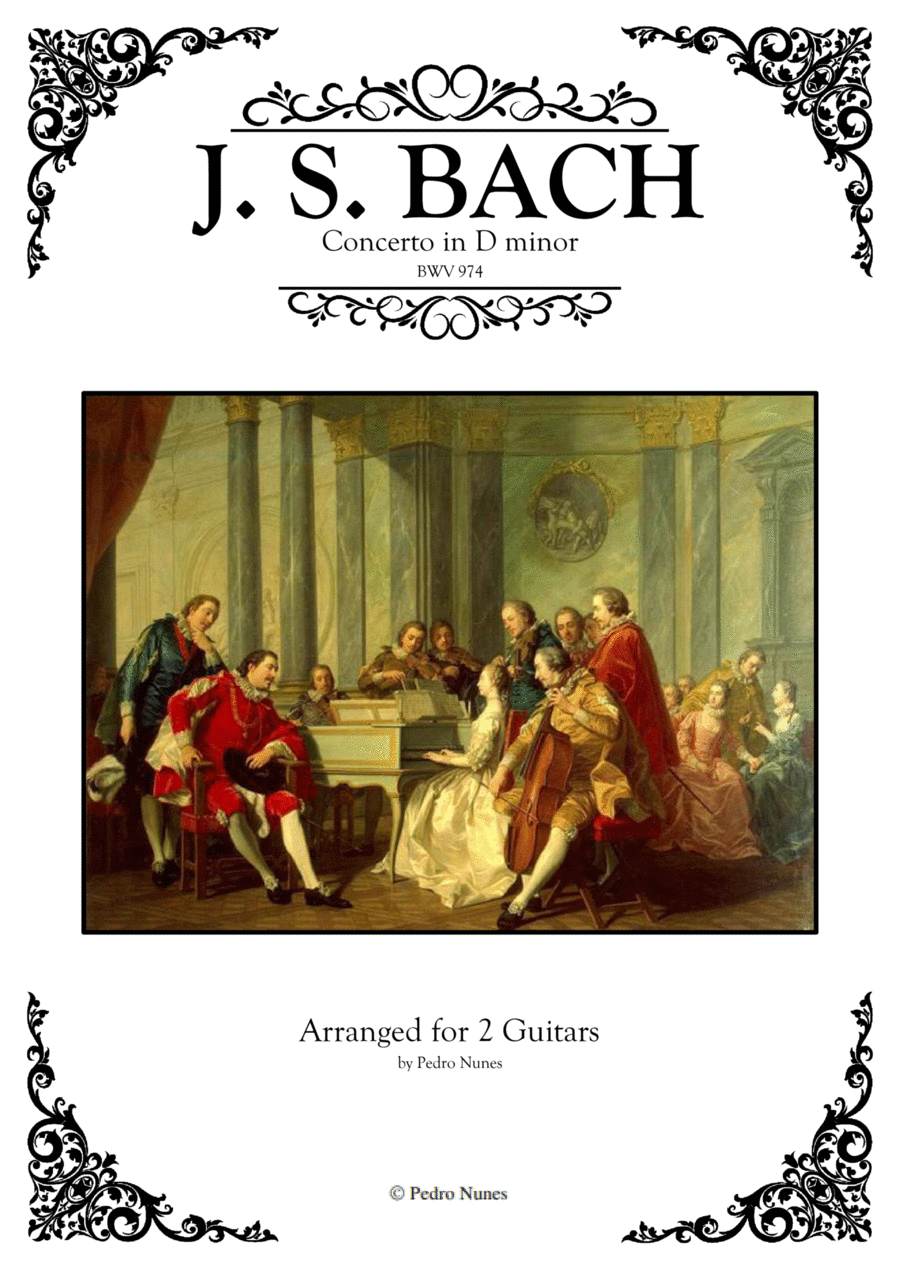Instrumental Duet Guitar,Instrumental Duet - Level 4 - Digital Download SKU: A0.540177 Composed by Johann Sebastian Bach. Arranged by Pedro Nunes. Baroque. Score and parts. 7 pages. Pedro Nunes #150317. Published by Pedro Nunes (A0.540177). The earliest known surviving manuscript of Alessandro Marcelloâs Oboe concerto in D minor exists not as a score from the composerâs own hand, but as an arrangement for solo keyboard by contemporary J.S. Bach. This arrangement, dating from 1713-1714, is part of a collection of works entitled 16 Konzerte nach verschiedenen Meistern, BWV 972â987 (16 concerts according to different masters). It is Bachâs arrangement on which this duo version for guitar is heavily based. Bach discovered this concerto and other works by Italian masters while under the employment of Duke Wilhelm Ernst in Weimar.. The musical library of the ducal court was rich with orchestral works by Vivaldi, Corelli, Torelli, Frescobaldi and of course Marcello (both Benedetto and Alessandro). Bach saw this as an opportunity to learn about the Italian style, and proceeded to arrange sixteen of these concerti for solo harpsichord. Texturally, Bach would mimic the alternating tutti and solo sections by assigning them to different manuals of the harpsichord. Twenty years later, Bach would compose his own âItalian Concertoâ BWV 971, for solo keyboard, which remains as one of his most recognizable works. The Marcello concerto is in typical 3 movement form: Andante e spiccato, Adagio, and Presto. For this arrangement, single-string fingerings of melodic passages were favoured for the first movement, for the sake of articulation and uniformity of the line. Also, the melodic material is passed between both guitars to achieve a more concertante setting and to enhance passages with repeated material. The second movement maintains a soloist/accompanist setting throughout. Although it was tempting to use both guitars to fill out the harmony of the opening and closing sections, the performance proved to be more effective with one guitarist able to solely concentrate on the famous melody. The final movement, like the first, divides the melodic material between both guitars in order to give both players interesting material and to give the first guitar a bit of breathing room.
